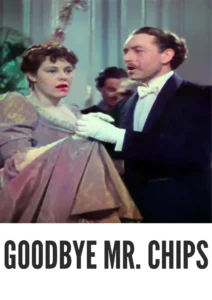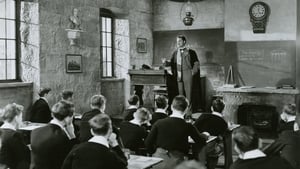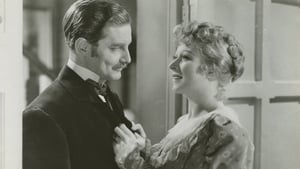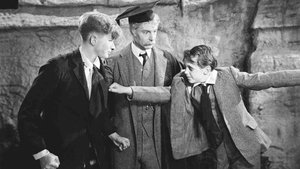A Heartwarming Tale of a Beloved Schoolteacher: Goodbye, Mr. Chips (1939) in Stunning Color

Step back in time with Goodbye, Mr. Chips, a poignant sentimental drama from 1939, now beautifully colorized for an enhanced viewing experience. Starring Robert Donat and Greer Garson, this film, also known as Goodbye Mr. Chips, tells the touching story of a dedicated schoolteacher and his enduring impact on generations of students. Perfect for classic film enthusiasts and those who appreciate heartfelt stories, this HD download brings a timeless cinematic treasure to your screen.
Goodbye, Mr. Chips Storyline: A Life Dedicated to Education
Goodbye, Mr. Chips chronicles the life of Mr. Chipping, an initially strict and reserved schoolteacher at Brookfield, a traditional British boarding school. Over the years, he evolves into a beloved figure, cherished by students and colleagues alike.The film explores his transformation through key moments, including his unexpected marriage to Kathie, a vibrant and progressive woman who brings joy and warmth to his life. Her untimely death deeply affects him but strengthens his resolve to continue teaching. Mr. Chipping’s dedication to his students and his ability to adapt to changing times make him an unforgettable character. Through wars, personal tragedies, and the everyday challenges of school life, Goodbye, Mr. Chips is a moving portrayal of a life dedicated to education and the lasting impact one person can have on the lives of many.
Movie Cast
The film features a stellar cast of actors who bring this heartwarming story to life:
- Robert Donat as Mr. Chips
- Greer Garson as Kathie
- Terry Kilburn as John Colley (and young Colleys)
- John Mills as Peter Colley as an Adult
- Paul von Hernreid as Max Staefel
Movie Genre
Goodbye, Mr. Chips falls into the genre of sentimental drama, with elements of romance and historical drama. Its heartwarming story and emotional depth make it a timeless classic.
Historical Context: Pre-War Cinema and British Identity
Released in 1939, Goodbye, Mr. Chips reflects the values and ideals of pre-war Britain, emphasizing themes of duty, tradition, and the importance of education. The film was a major success, resonating with audiences who appreciated its optimistic portrayal of British life. Goodbye, Mr. Chips remains a significant work in British cinema, celebrated for its moving story and strong performances.
Colorization Details
This colorized version of Goodbye, Mr. Chips has been meticulously restored using modern digital techniques, enhancing the visual appeal while preserving the film’s original charm and emotional impact. The colorization process involved carefully analyzing the grayscale tones of the original black and white footage and assigning appropriate colors to each scene. This painstaking process brings new life to the characters and settings, making the story even more engaging for modern audiences. While some may debate the merits of colorizing classic films, it introduces these films to a broader audience, ensuring their legacy for future generations.
Technical Details
- Director: Sam Wood
- Screenplay: R.C. Sherriff, Claudine West, Eric Maschwitz, James Hilton (novel)
- Cinematography: Freddie Young
- Edited by: Robert J. Kern
- Production Company: Metro-Goldwyn-Mayer
- Distributed by: Metro-Goldwyn-Mayer
- Runtime: 114 minutes
Technical Specifications
- Download Format: MP4
- Resolution: HD (1080p)
- Compatibility: Compatible with most devices, including smartphones, tablets, computers, and smart TVs.
Reviews and Critical Reception
Goodbye, Mr. Chips (1939) is widely regarded as a cinematic masterpiece, celebrated for its heartwarming story, exceptional performances, and timeless themes. The film won Robert Donat an Academy Award for Best Actor, and it remains a beloved classic for its portrayal of a life dedicated to education and the enduring power of human connection.
FAQs
- Q: What is Goodbye, Mr. Chips about?
- A: Goodbye, Mr. Chips is a sentimental drama about the life of a dedicated schoolteacher and his impact on generations of students.
- Q: Is Goodbye, Mr. Chips (1939) a well-known film?
- A: Yes, Goodbye, Mr. Chips is a highly acclaimed and beloved classic, known for its heartwarming story and strong performances.
- Q: Is this version of Goodbye, Mr. Chips colorized?
- A: Yes, this version has been professionally colorized to enhance the viewing experience.
- Q: What makes Goodbye, Mr. Chips a classic?
- A: Goodbye, Mr. Chips is a classic for its moving story, exceptional acting, and timeless themes of education, love, and dedication.
- Q: What is the download format?
- A: The download format is MP4, which is compatible with most devices.
- Q: What resolution is the download?
- A: The resolution is HD (1080p), providing a high-quality viewing experience.
Download Now in HD!
Watch Goodbye, Mr. Chips Today!














